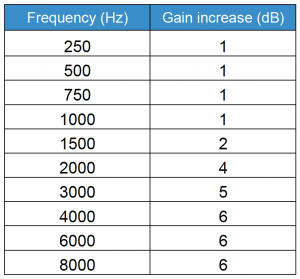NAL Mask Adjustments To Overcome the Effect of Face Masks for Hearing Aid Users
Editor's Note:
Wearing masks degrade the intelligibility of speech, specifically by decreasing the audibility of the higher frequency consonants. Several manufacturers (Signia and Starkey) have already included software programming that will compensate for this, but the NAL has come out with "corrections" that can be added as a "wearing a mask" program. Be sure to verify these results with your patients.
Wearing a face mask during conversation has become commonplace to deter the spread of COVID-19. Face masks, however, attenuate the high frequencies of the speech of the person wearing the mask. This presents a challenging problem for the hearing-impaired community for whom the reduction in speech level can affect the audibility of critical speech cues and thus harm speech understanding.
A solution for helping hearing aid wearers is to provide a face mask program in their hearing aid that increases gain to compensate for the reduced speech levels of the talker wearing the mask.
The table below provides target gain adjustments that have been shown both acoustically and behaviourally to counteract the effect of face masks on speech. To apply these gain adjustments, the hearing healthcare practitioner should copy the primary program settings into a special face mask program and then:
- apply the gain adjustments as best as they can, given the capabilities of the fitting software and the hearing aid;
- ensure that the increased gain does not cause feedback problems;
- ensure that the increased gain does not cause uncomfortable loudness for sounds other
than the masked speech;
- ensure that the increased gain does not cause sound quality issues because the hearing
aids have reached output or gain limits;
- enable maximum directionality and noise reduction settings in this face mask program,
which will reduce the loudness of environmental sounds heard while using the face mask program;
- apply any other best practices and clinical/audiological expertise used when making
hearing aid adjustments to ensure the safety and satisfaction of the hearing aid wearer.

Should you choose to use this information, it will be at your own risk. NAL will accept no liability for any losses or damages in connection with the use of this information.


